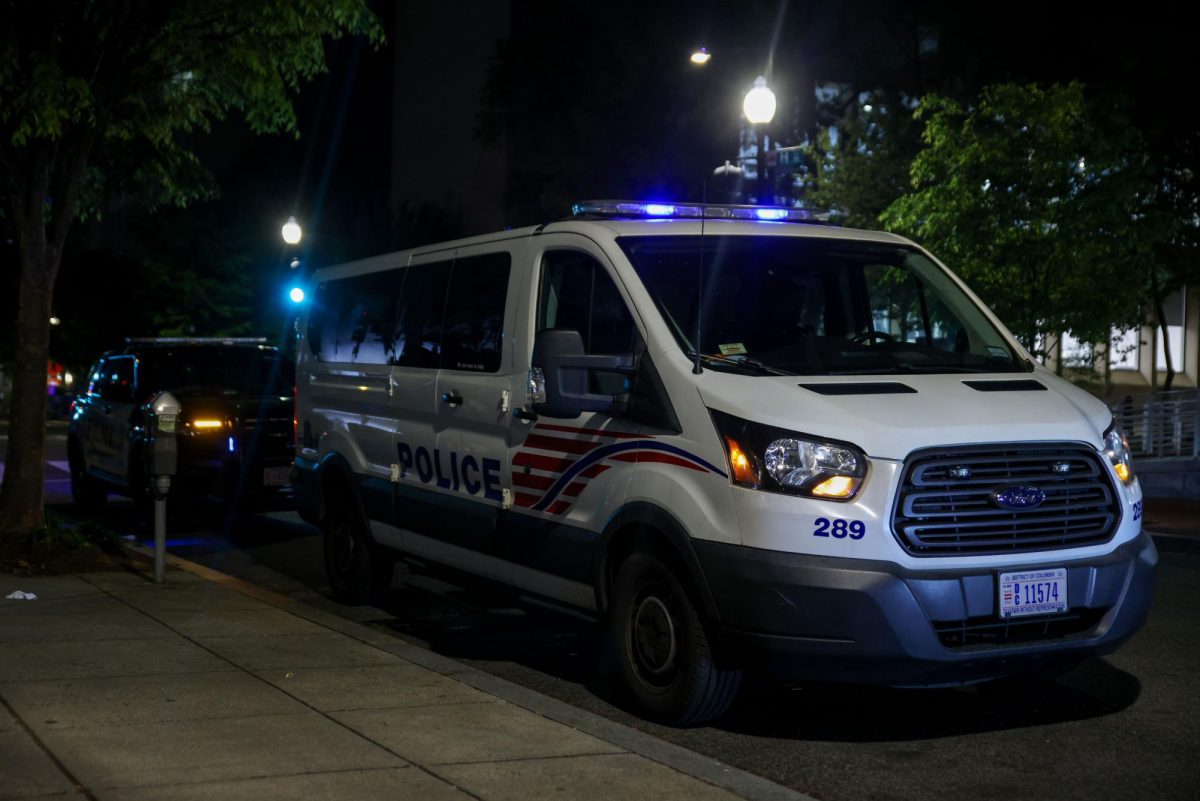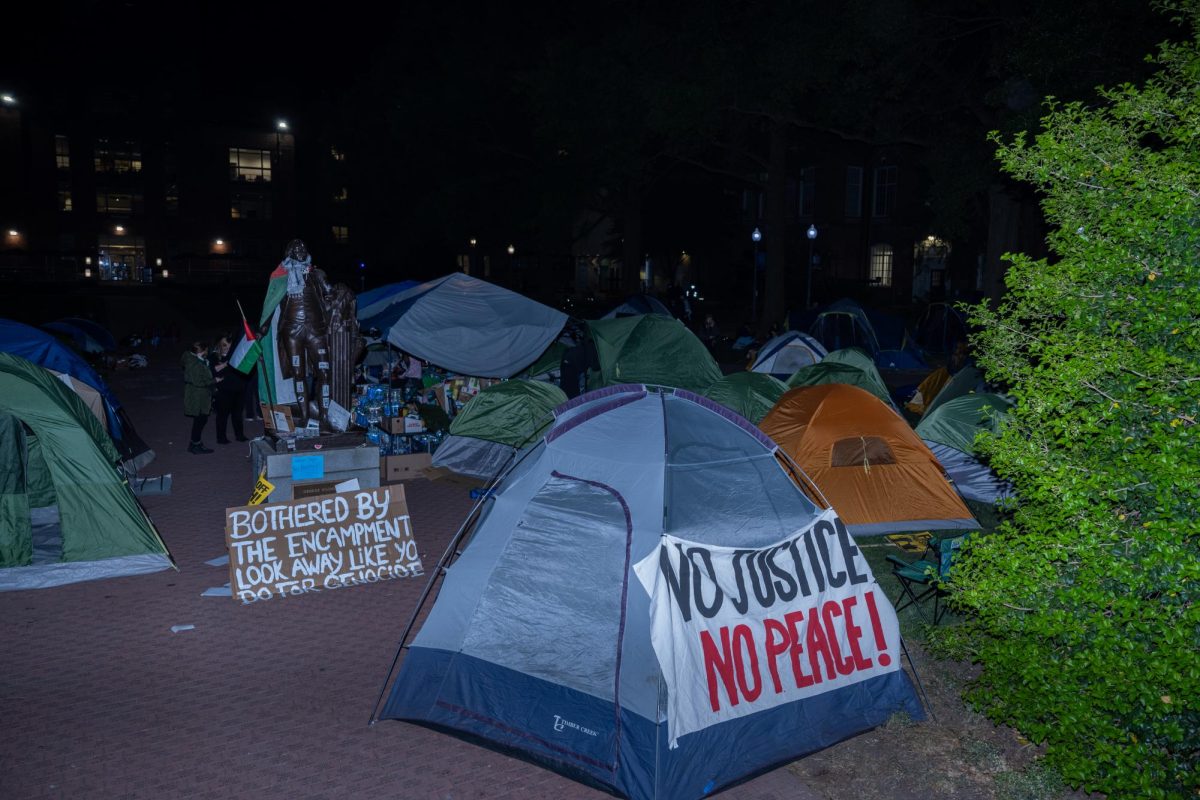Updated: March 30, 2020 at 2:31 p.m.
GW may receive as much as $10 million from a multi-trillion-dollar federal deal aimed at mitigating the economic effects of COVID-19, according to a Hatchet analysis.
The bill, passed by both chambers of Congress late last week and signed into law by President Donald Trump Friday, includes roughly $14.2 billion in relief funding for colleges and universities in the wake of the coronavirus pandemic. The legislation provides direct funding to universities and protections for student loan recipients as many institutions, including GW, transition classes online and require students to leave campus.
“Because of the talent behind me and lots of other talent in government, what we’ve done – this is a big part of it, obviously, but not the biggest part,” Trump said at the bill signing ceremony Friday. “Everybody has pulled together. Our nation has pulled together. The spirit is incredible.”
University spokeswoman Crystal Nosal did not return a request for comment about the bill.
The law proportionally allocates about $9.4 billion to colleges and universities through the Higher Education Emergency Relief Fund based on full-time equivalent enrollment of Pell Grant recipients and about $3.1 billion based on full-time equivalent enrollment of students who do not receive Pell Grants, according to the text of the bill.
In 2018, 1,708 students at GW received Pell Grants out of about 7.2 million recipients nationwide, according to National Center for Education Statistics data. GW’s full-time equivalent enrollment excluding Pell Grant recipients reached 21,794 in 2018 out of roughly 8.1 million across all colleges nationwide, according to the National Center for Education Statistics and institutional data.
GW’s enrollment and number of Pell Grant recipients would equate to roughly $10.7 million in funding under the landmark spending package. The legislation mandates that administrators provide at least half of the funding to students in emergency aid but may use the remaining funds to cover any costs related to the virus.
The Hatchet’s analysis assumes that the ratio of GW’s full-time equivalent Pell Grant enrollment to GW’s total Pell enrollment – and GW’s FTE non-Pell enrollment to GW’s total non-Pell enrollment – resembles the average higher education institution. The actual award GW could receive from the federal government likely differs from this estimate and ultimately depends on those figures.
Administrators have encouraged the GW community to donate to an emergency student aid fund in light of the pandemic.
Officials will reimburse students for dining, housing and parking costs during the period of online classes and will pay for a moving company to pack and store students’ belongings until the fall. Officials also announced they will suspend most capital projects and hirings to ensure the University remains solvent as it maintains daily operations.
The University must agree to continue paying its employees and contractors to the “greatest extent practicable” so long as campus operations are disrupted by the virus by accepting the federal funds, the law states.
Chief People Officer Dana Bradley said all of GW’s roughly 5,500 employees will continue receiving pay during the interim period, but the University does not directly pay those employed through contractors, like Aramark. Bradley said she did not know how many total contractors provide services to GW.
“If the contractors are still providing a service to GW, Aramark is required to pay for their employees for time worked,” she said in an email.
An Aramark spokesperson did not return multiple requests for comment.
Funds for the District, which are expected to total about $500 million, were appropriated separately from those for the 50 states, each of which will receive at least $1.25 billion. The gap in funding pushed Mayor Muriel Bowser and every member of the D.C. Council to sign a letter condemning the funding amount.
The massive spending package also permits institutions to pay federal work-study wages to students who cannot fulfill their duties as a result of the virus for up to one academic year. Officials committed last week to allow departments to pay work-study wages to students through the end of the spring semester even if students can’t complete their duties remotely.
The law also stipulates that students who drop below full-time status because they dropped courses as a result of the pandemic will keep their full-time federal student aid awards.
Nosal, the University spokeswoman, said officials do not believe students will need to change their enrollment status during the instructional continuity period.
“GW expects that students will be able to complete their courses the rest of the semester through virtual learning,” she said in an email. “There shouldn’t be an issue of students changing from full-time to part-time status. Students who have concerns should contact their adviser directly to discuss their options for completing their courses.”
The spending package also suspends monthly payments on federal student loans until Sept. 30, extending a policy enacted by the Department of Education for 60 days. Interest will not accrue during that time, according to a department release.
Sen. Patty Murray, D-Wa. – the top Democrat on the Senate Committee on Health, Education, Labor and Pensions – said in a statement Thursday that the “critical” funding for higher education will help universities prepare for, respond to and recover from the pandemic but added that the legislation is only the first step.
“I’m glad this relief will help schools continue to provide services as they get back up and running as soon as possible,” Murray said in the statement. “But as the crisis continues, more work must be done, and I’ll keep fighting to ensure all students, families and educators get the relief they need.”
Murray, along with Sens. Chuck Schumer, D-N.Y., Sherrod Brown, D-Ohio, and Elizabeth Warren, D-Mass., unveiled a proposal earlier this month that would forgive a minimum of $10,000 in federal student loans per student in response to the pandemic.
The spending package did not go as far as some higher education activists had hoped. Nearly 80 tertiary education organizations, including at least three that list GW as a member institution, called on Congress last week to pass about $50 billion in funding – almost five times the amount actually appropriated – for universities and students.
Ted Mitchell – the president of the American Council on Education, which signed the letter – said in a statement following the legislation’s unanimous passage in the Senate that it is an improvement from earlier versions of proposed COVID-19 relief packages but is still “woefully inadequate.”
“It is critical that students receive support for needs such as finding housing, technology assistance for online learning or to travel home,” he said in the statement. “Campuses are losing staggering sums after closing for safety reasons and refunding tuition, room and board and other auxiliary revenues.”
Mitchell added that the package is recognition of the fact that colleges and universities are facing an “unprecedented” cash flow crisis in the wake of the virus, as they lose revenue streams but find themselves still needing to pay employees.
“We believe that additional broad-based funding measures will be forthcoming, and we will do everything possible to ensure that federal officials understand the full range of costly and complex challenges that students and their colleges and universities are facing,” Michell said.
Nosal, the University spokeswoman, said GW supports many of the proposals in the letter but declined to take a stance on any particular policy recommendations stated in the letter.
“GW shares many of the sentiments expressed in the letter, particularly calls for robust federal assistance to both students and institutions during this unprecedented situation,” she said. “Furthermore, GW also supports any efforts to ensure students are able to make the transition to virtual learning as seamlessly as possible.”








